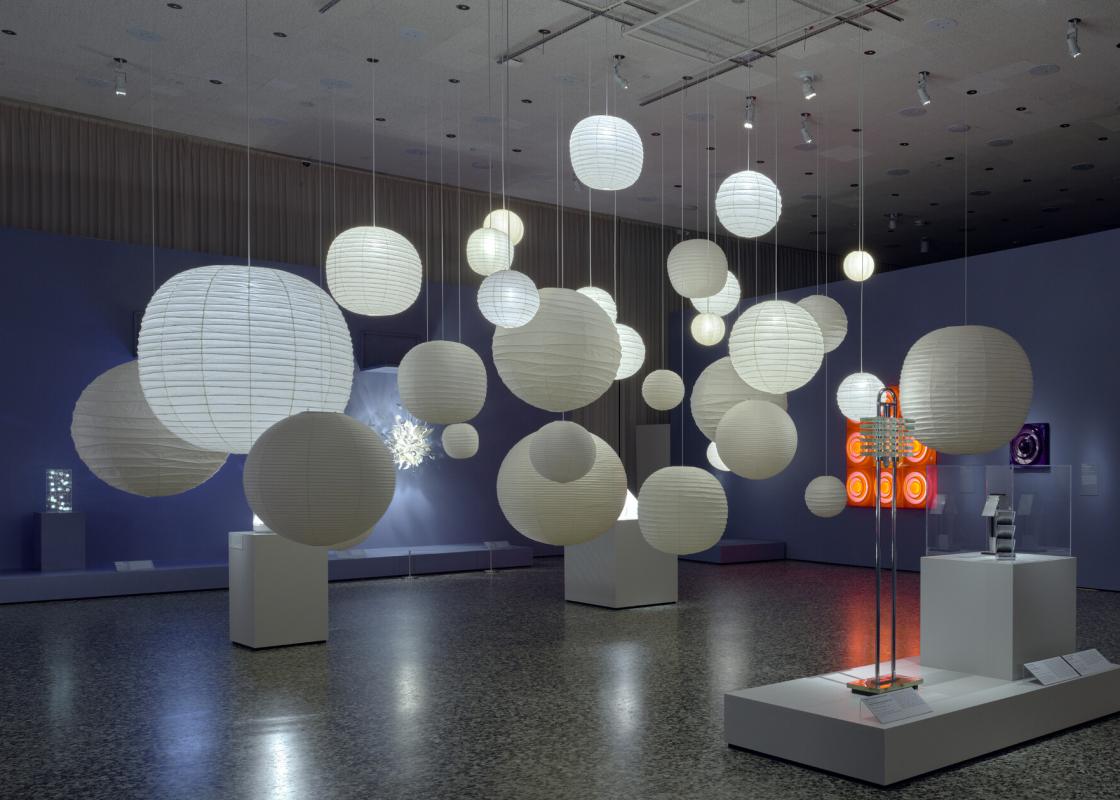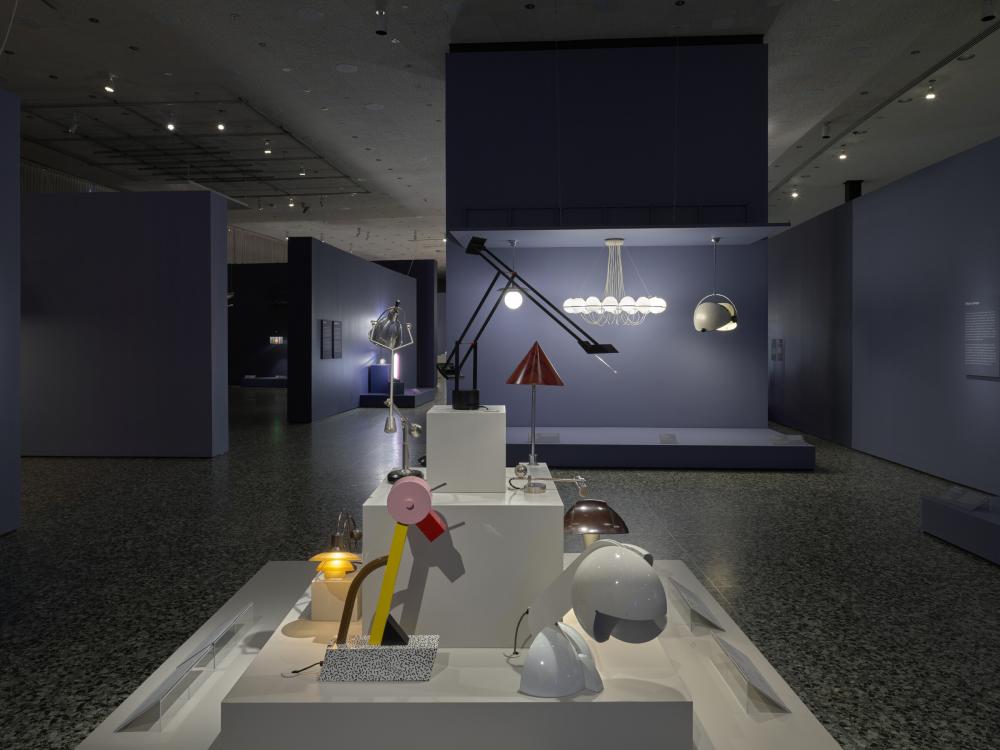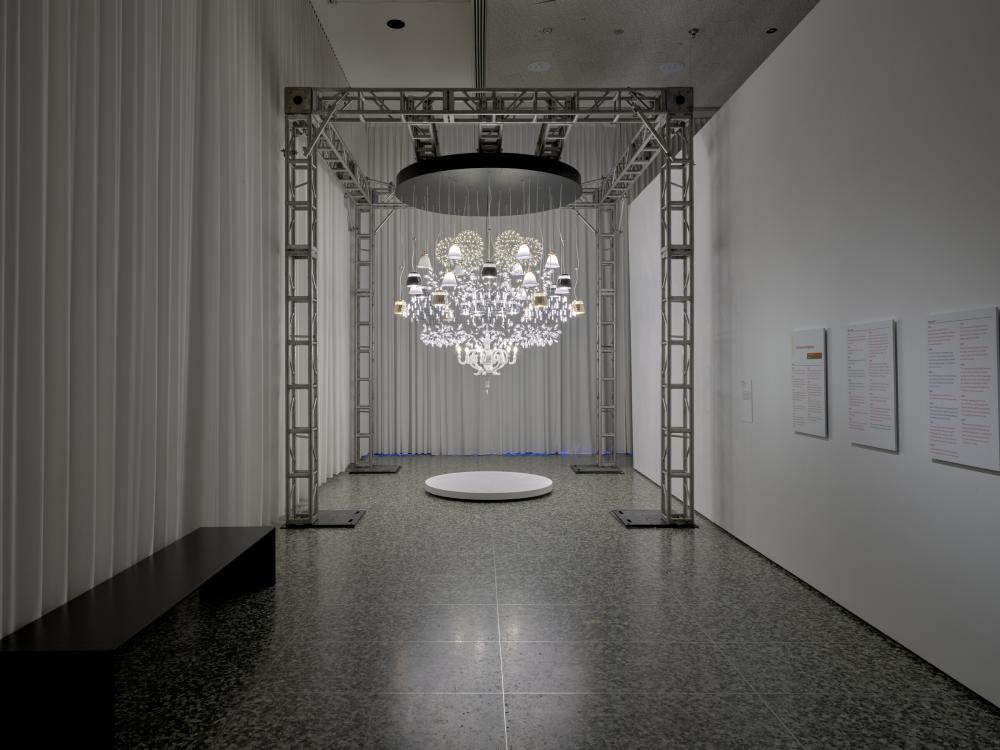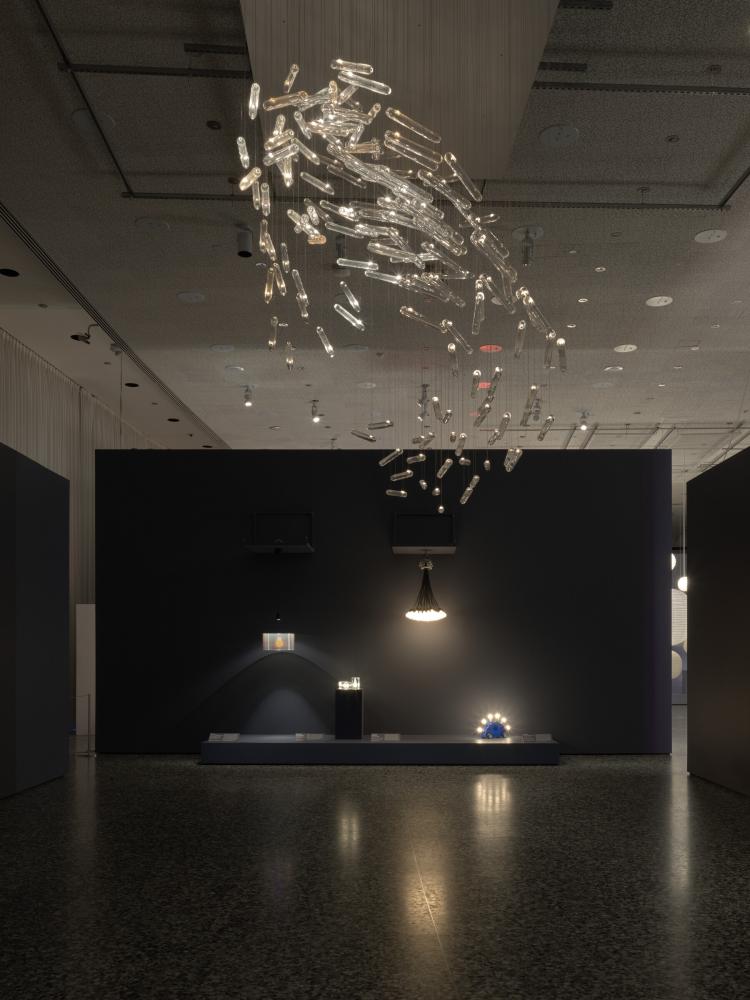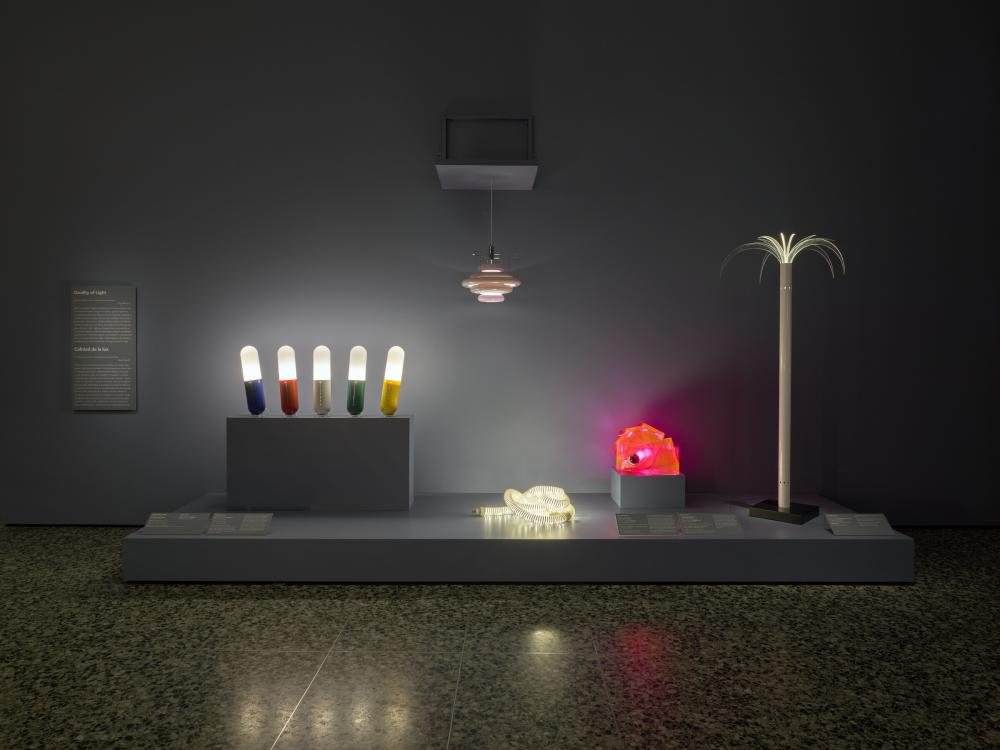At night or on particularly dark days, we turn on our light fixtures to illuminate our interiors. Lamps of various sizes and shapes allow us to accomplish certain tasks, but lately, given that more basic operations are handled by the lowly can light, lamps are more about “mood.” With the arrival of electric lighting, architects designed elements to accompany their gesamtkunstwerks—think of Frank Lloyd Wright’s many integrated lighting elements or Álvaro Siza’s boa nova lamp for his Casa de chá in Portugal. But rather than existing as one component of an architect’s totalizing vision, lighting design is a realm unto itself, as Electrifying Design: A Century of Lighting, on view at the Museum of Fine Arts, Houston, until May 16, makes clear.
The past century has yielded many advances in lighting technology; there are now incandescent, neon, fluorescent, halogen, CFL, and LED bulbs, each with distinctive qualities. Like the evolution of the colorful plumage of birds, lighting has flourished into a universe of expressions. This history is the source material for Electrifying Design, co-curated by Cindi Strauss (the Sara and Bill Morgan Curator of Decorative Arts, Craft, and Design at the Museum of Fine Arts, Houston) and Sarah Schleuning (the Margo B. Perot Senior Curator of Decorative Arts and Design at the Dallas Museum of Art). The effort is the first significant show in the country to examine lighting design over the past century.
Electrifying Design makes the case that the medium of lighting is an important realm of design in which the intense technological advancements and wide range of formal experiments within many design movements can be seen. Eighty-five items are included in the show; some are still commercially available (like the inescapable Arco Floor Lamp, anchored by a chunk of marble), but many are rare or limited-production pieces. Canonical designers are featured, including Gae Aulenti, Joe Colombo, Poul Henningsen, Arne Jacobsen, Ingo Maurer, J.J.P. Oud, Verner Panton, Ettore Sottsass, among others.
The show, staged inside drawn curtains on the upper floor of the Caroline Wiess Law Building, is organized into three sections, each with its own room: typologies, the lightbulb, and quality of light. Each part of the exhibit contains historical examples and is paired with a large-scale immersive experience. The development of various lighting typologies is on view in the first section. A selection of task lamps, floor lamps, and ceiling lamps showcases a genealogy of these forms. A sense of technological history is best seen in the lightbulbs section, where experiments in the light source itself showcase both the expanding chemical possibilities of lighting elements and their aesthetic interpretations. In the quality of light section, the manipulation of lighting effects is explored, from shades to diffusers, lanterns, and coatings. The dim ambient lighting, purple backdrops, and green terrazzo floor make the space feel cozy, more like a restaurant than a gallery.
Enthusiasts will appreciate the collected pieces, but the more immersive zones are where a more communal experience with light takes place. DRIFT’s Flylight (Basel) (2015) is a delicate swarm of hand-blown glass bulbs with LEDs. Sensors track the motion of guests and the flock glows correspondingly, creating a dialogue between light and movement. A field of Isamu Noguchi lamps from his Akari series (1951) create a warm central zone through which you can wander.
The show is useful for designers to build design history fluency. Many of these fixtures I’d only seen in books or briefly in showrooms—now I’m able to get up close and personal. Some are built like tanks, others like precious artworks. How big is the Taccia Table Lamp (1962/1977), designed by Achille and Pier Giacomo Castiglioni, really? Now you can know for sure. What does the glow of the HAL 9000-like Ring Lamp (1970) by Verner Panton look like? See for yourself. Do the supporting cables for Ingo Maurer’s brilliant YaYaHo Adjustable Lighting System (1984) disappear? It depends.
The show contains distinctive wow-inducing fixtures. Moooi’s Mega Chandelier (2018) greets you upon arrival at the exhibition, and quirky items by designers like Ron Arad and Ronan and Erwan Bouroullec are wild entries, among many expressive characters. I found myself drawn to the stripped-down early modern fixtures, like Greta Magnusson Grossman’s Floor Lamp Model 831 (1949-52), Eileen Gray’s designs, or the now-classic AJ Floor Lamp (1957) by Arne Jacobsen. I nearly reached out to touch Jean Prouvé’s Potence d’Eclairage (Swing Jib Lamp) No. 602 (1952), a wall-mounted piece that swivels. In a non-pandemic world, a hands-on section for tactile experience would be a welcome addition.
The superstars of Italian design shine brightly in this show. Items by Achille and Pier Giacomo Castiglioni are good to see in person, notably their Noce Table/Floor Wall Light (1972-4), which looks like a car headlight, and their industrial Toio Floor Lamp (1962/1972). There’s a couple fun Memphis lamps, including Martine Bedin’s Super Lamp (1978/1981-8). Other highlights are Superstudio’s Olook Hanging Lamp (1968/1968-75) for Design Centre and Gino Sarfatti’s 1063 Floor Lamp (1954) for Arteluce, which uses its brick-like transformer to anchor the design.
Electrifying Design is well-stocked but not encyclopedic: the typologies omit the wall sconce; there aren’t any outdoor fixtures; the representation skews European, with some Japanese, American, and Israeli designers; and, while it’s so impressive to see these elements all together, they’re isolated from the interiors and object families where they make more sense, an extraction that could be helped with images of these items “in the wild,” so to speak. There’s also no energetic context: less than 5% of the energy consumed by incandescent bulbs is emitted as visible light; the rest is heat, which means when we switch to LEDs, our electricity bills dip. (There are savings but it’s not a big drop in the bucket: general lighting is only 4% of the energy used in American homes according to the U.S. Energy Information Administration.) Still, the ambition of the exhibition is celebration, not critique—there are other outlets for that, which include the show's handsome catalog.
What’s so valuable about Electrifying Design is the pleasure of seeing these fixtures in real life, appreciating their craft, and basking in their pools of light. You should visit this week, as the show closes on Sunday. Then it’s lights out—at least until the show re-opens at Atlanta’s High Museum in July.
Jack Murphy is Editor of Cite.


